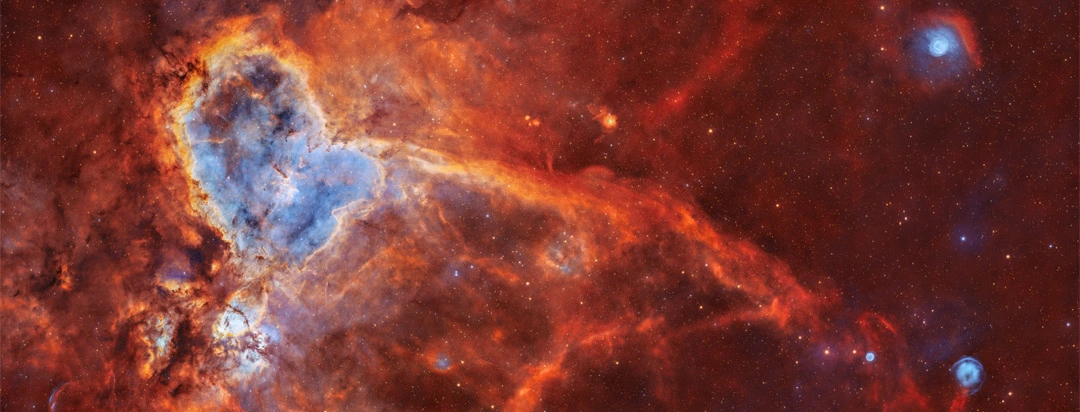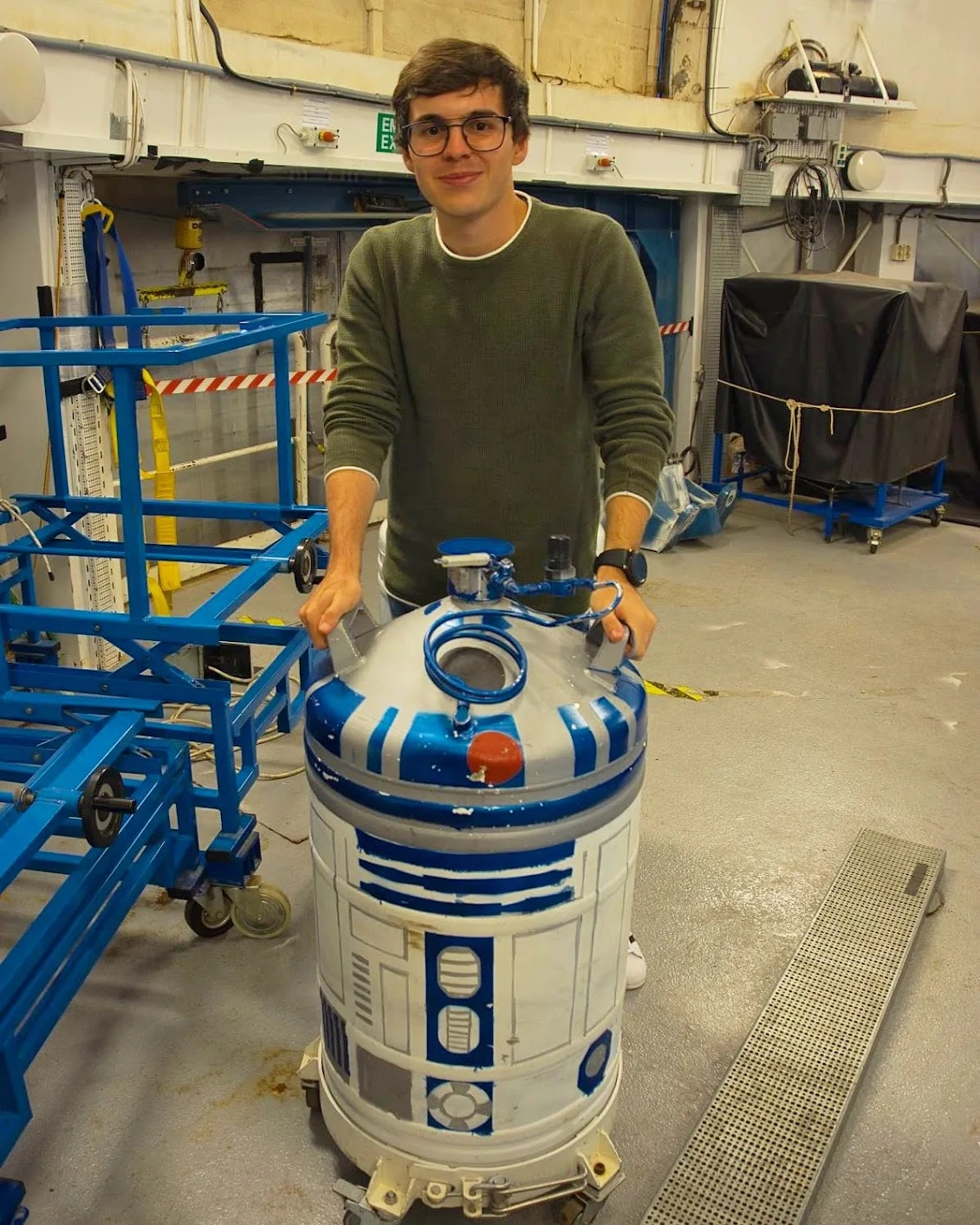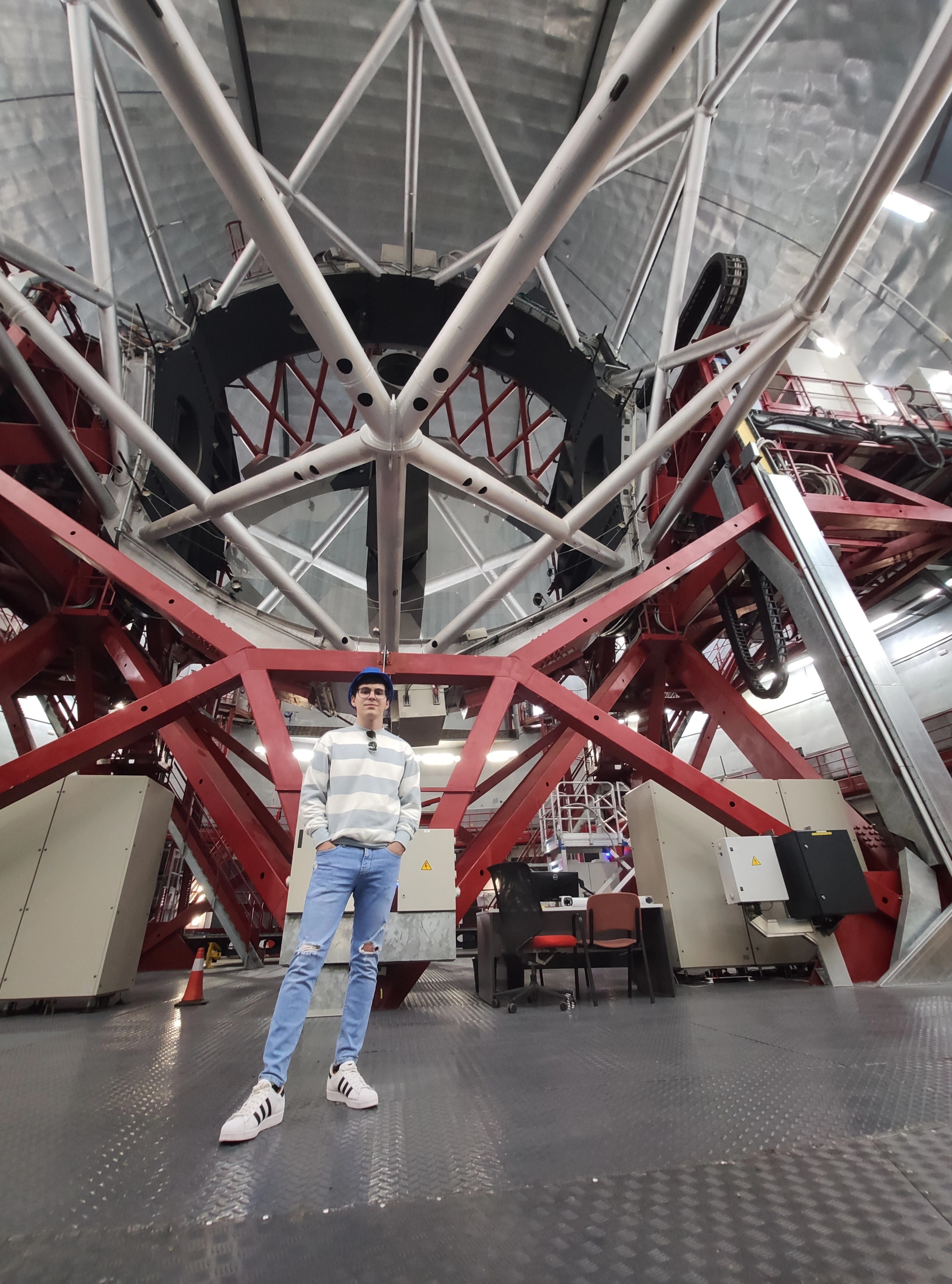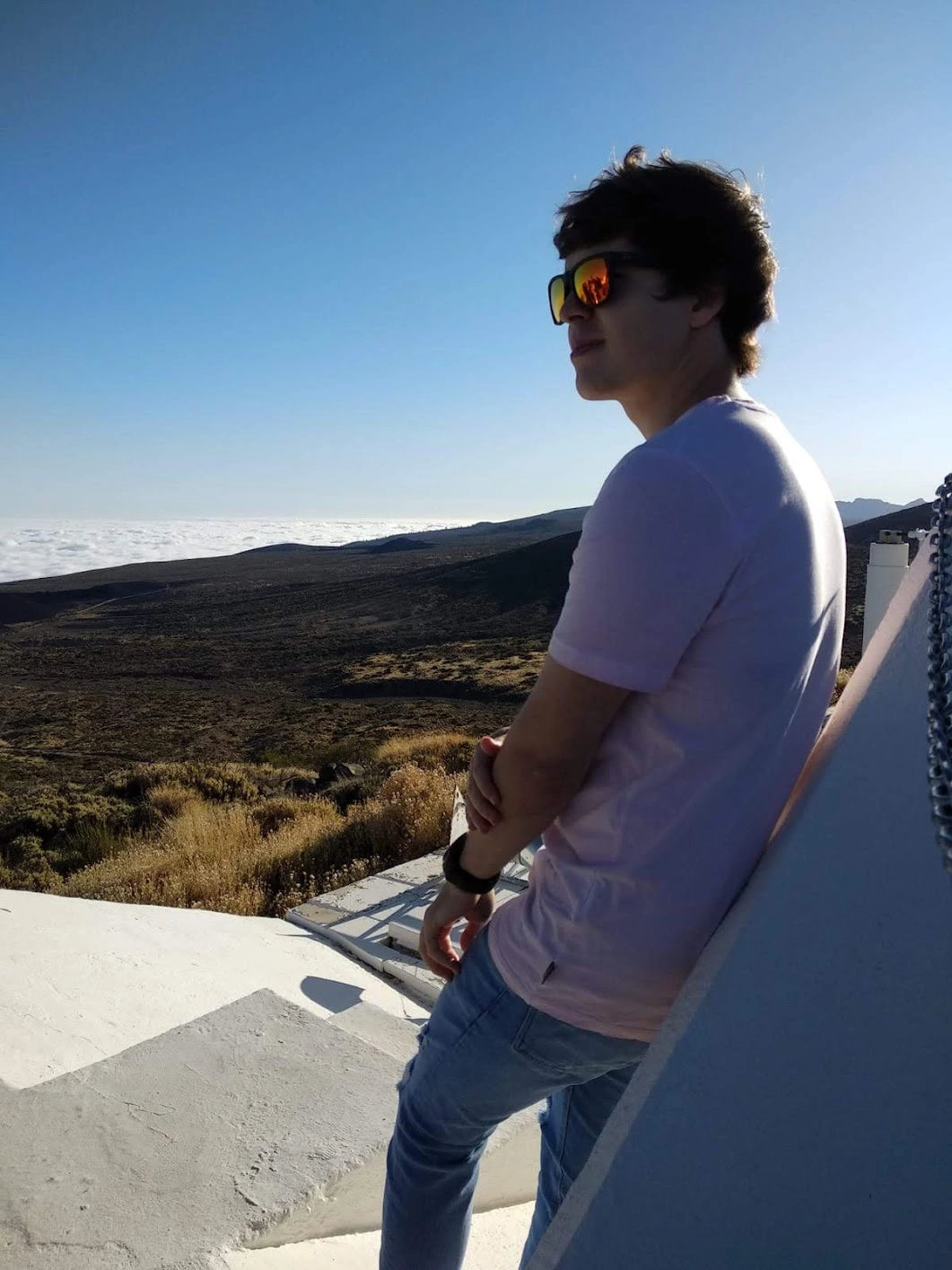My Journey in Astrophysics
Passionate about stars, science, and divulgation

I’m Daniel, an astrophysicist from Meirás, a small village near La Coruña, Galicia. I studied Physics at the Universidade de Santiago de Compostela, where I completed my BSc thesis on Photometric observations of eclipsing binary star systems. During my studies, I had the incredible opportunity to spend a year in Tenerife through the SICUE program. There, I took my first astrophysics courses and made my initial observations with professional telescopes—an experience that gave me invaluable insight into the life of a professional astrophysicist.
In 2021, I moved to San Cristóbal de La Laguna (Tenerife) to pursue a Master’s degree in Astrophysics. Those two years were both challenging and deeply rewarding, offering me the chance to work with world-class telescopes such as the NOT and the INT, and to connect with an inspiring and supportive astronomy community. I completed my MSc thesis, titled Physical parameters of the low-mass eclipsing binary system ASAS J052919-1617.3, receiving the highest possible grade for my work.
I am currently a PhD student in the Physical Properties and Evolution of Massive Stars group at the Instituto de Astrofísica de Canarias (IAC). My research focuses on the rotational properties of massive stars and their role in stellar evolution and final fates, whether as supernovae, neutron stars, or black holes. In particular, I study how rotational deformation—where rapid rotation (>200 km/s) causes a rugby-ball shape—affects the fundamental parameters of massive stars. My current project focuses on stars in the Cygnus OB2 association, one of the most active star-forming regions in the Milky Way and a key laboratory for studying the evolution of massive stars.
Interestingly, we have observed a puzzling lack of fast-rotating stars in Cygnus OB2—an unexpected result given the presence of multiple systems and stellar interactions in such environments. I am investigating whether this apparent absence is real by analyzing single and multiple systems, mergers, and runaway stars in the region. If confirmed, this finding could challenge current stellar evolution models and the assumed mechanisms of angular momentum transfer.
Beyond my core research, I am actively involved in a variety of astrophysical initiatives:
- Co-leading the creation of the first association of astrophysicists from Galicia, and contributing to the development of the region’s only observatory, located in Forcarei.
- Co-directing a course on Positional Astronomy and the Fundamentals of Astronomical Observation at the Universidad de La Laguna (ULL).
In 2023, I began teaching as an assistant professor for the Basic Observational Techniques course in the Master’s program in Astrophysics at ULL. I currently teach in the undergraduate Physics program, where I supervise students during their external internships at the IAC. I am also co-directing my first BSc thesis on eclipsing binary systems alongside Dr. María Jesús Arévalo Morales.


